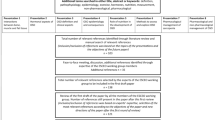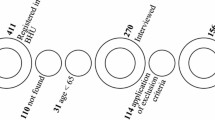Abstract
Summary
We determined the prevalence of osteosarcopenic obesity (loss of bone and muscle coexistent with increased adiposity) in overweight/obese postmenopausal women and compared their functionality to obese-only women. Results showed that osteosarcopenic obese women were outperformed by obese-only women in handgrip strength and walking/balance abilities indicating their higher risk for mobility impairments.
Introduction
Osteosarcopenic obesity (OSO) is a recently defined triad of osteopenia/osteoporosis, sarcopenia, and adiposity. We identified women with OSO in overweight/obese postmenopausal women and evaluated their functionality comparing them with obese-only (OB) women. Additionally, women with osteopenic/osteoporotic obesity (OO), but no sarcopenia, and those with sarcopenic obesity (SO), but no osteopenia/osteoporosis, were identified and compared. We hypothesized that OSO women will have the lowest scores for each of the functionality measures.
Methods
Participants (n = 258; % body fat ≥35) were assessed using a Lunar iDXA instrument for bone and body composition. Sarcopenia was determined from negative residuals of linear regression modeled on appendicular lean mass, height, and body fat, using 20th percentile as a cutoff. Participants with T-scores of L1–L4 vertebrae and/or total femur <−1, but without sarcopenia, were identified as OO (n = 99) and those with normal T-scores, but with sarcopenia, as SO (n = 28). OSO (n = 32) included women with both osteopenia/osteoporosis and sarcopenia, while those with normal bone and no sarcopenia were classified as OB (n = 99). Functionality measures such as handgrip strength, normal/brisk walking speed, and right/left leg stance were evaluated and compared among groups.
Results
Women with OSO presented with the lowest handgrip scores, slowest normal and brisk walking speed, and shortest time for each leg stance, but these results were statistically significantly different only from the OB group.
Conclusion
These findings indicate a poorer functionality in women presenting with OSO, particularly compared to OB women, increasing the risk for bone fractures and immobility from the combined decline in bone and muscle mass, and increased fat mass.




Similar content being viewed by others
References
Ilich JZ, Kelly OJ, Inglis JI, Panton LB, Duque G, Ormsbee MJ (2014) Interrelationship among muscle, fat, and bone: connecting the dots on cellular, hormonal, and whole body levels. Ageing Res Rev 15:51–60
Ormsbee MJ, Prado CM, Ilich JZ, Purcel S, Siervo M, Folsom A, Panton L (2014) Osteosarcopenic obesity: the role of bone, muscle and fat in health. J Cachexia Sarcopenia Mus 5:183–192
Walsh MC, Hunter GR, Livingstone MC (2006) Sarcopenia in premenopausal and postmenopausal women with osteopenia, osteoporosis and normal bone mineral density. Osteoporos Int 17:61–67
International Osteoporosis Foundation. www.iofbonehealth.org/facts-statistics. Accessed August 2014
Kanis JA, McCloskey EV, Johansson H, Oden A, Strom O, Borgstrom F (2010) Development and use of FRAX in osteoporosis. Osteoporos Int 21(Suppl 2):S407–S441
Roux S, Cabana F, Carrier N, Beaulieu M, April PM, Beaulieu MC, Boire G (2014) The World Health Organization fracture risk assessment tool (FRAX) underestimates incident and recurrent fractures in consecutive patients with fragility fractures. Clin Endocrinol Metab 7:2400–2408
Bolland MJ, Siu AT, Mason BH, Horne AM, Ames RW, Grey AB, Gamble GD, Reid IR (2011) Evaluation of the FRAX and Garvan fracture risk calculators in older women. J Bone Miner Res 26:420–427
Newman AB, Kupelian V, Visser M, Simonsick E, Goodpaster B, Nevitt M, Kritchevsky SB, Tylavsky FA, Rubin SM, Harris TB (2003) Sarcopenia: alternative definitions and associations with lower extremity function. J Amer Geriatric Soc 51:1602–1609
Binkley N, Krueger D, Buehrin B (2013) What’s in a name revisited: should osteoporosis and sarcopenia be considered components of “dysmobility syndrome?”. Osteoporos Int 24:2955–2959
Shin H, Liu PY, Panton LB, Ilich JZ (2014) Physical performance in relation to body composition and bone mineral density in healthy, overweight and obese postmenopausal women. J Ger Phys Therapy 37:7–16
Shin H, Panton LB, Dutton GR, Ilich JZ (2011) Relationship of physical performance with body composition and bone mineral density in individuals over 60 years of age: a systematic review. J Aging Res. doi:10.4061/2011/191896
Lindsey C, Brownbill RA, Bohannon RA, Ilich JZ (2005) Association of physical performance measures with bone mineral density in postmenopausal women. Arch Phys Med Rehab 86:1102–1107
Savino E, Martini E, Lauretani F, Pioli G, Zagatti AM, Frondini C, Pellicciotti F, Giordano A, Ferrari A, Nardelli A, Davoli ML, Zurlo A, Lunardelli ML, Volpato S (2013) Handgrip strength predicts persistent walking recovery after hip fracture surgery. Am J Med 126:1068–1075
Cruz-Jentoft AJ, Landi F, Schneider SM, et al. (2014) Prevalence of and interventions for sarcopenia in ageing adults: a systematic review. Report of the International Sarcopenia Initiative (EWGSOP and IWGS). Age Ageing. 2014; pii: afu115
Lusardi MM (2012) Is walking speed a vital sign? Absolutely! Top Ger Rehab 28:67–76
Baumgartner RN, Koehler KM, Gallagher D, Romero L, Heymsfield SB, Ross RR, Garry PJ, Lindeman RD (1998) Epidemiology of sarcopenia among the elderly in New Mexico. Am J Epidemiol 147:755–763
Domiciano D, Figueiredo C, Lopes J, Caparbo V, Takayama L, Menezes P, Bonfak E, Pereirak R (2012) Discriminating sarcopenia in community-dwelling older women with high frequency of overweight/obesity: the Sao Paulo Ageing & Health Study (SPAH). Osteoporos Int 24:595–603
Lourenco R, Perez-Zepeda M, Gutierrez-Robledo L, Rodriguez-Manas L, Garcia-Garcia F (2015) Performance of the European Working Group on Sarcopenia in Older People algorithm in screening older adults for muscle mass assessment. Age Ageing 44:334–8. doi:10.1093/ageing/afu192
Ilich JZ, Brownbill RA (2008) Habitual and low-impact activities are associated with better bone outcomes and lower body fat in older women. Calcif Tissue Int 83:260–271
Institute of Medicine of the National Academies (2012) Dietary reference intakes for calcium and vitamin D. Report. National Academy of Sciences, USA
Dufour AB, Hannan MT, Murabito JM, Kielk DP, McLean RR (2013) Sarcopenia definitions considering body size and fat mass are associated with mobility limitations: the Framingham Study. J Gerontol A Biol Sci Med Sci 68:168–174
Liu P-Y, Ilich JZ, Brummel-Smith K, Ghosh S (2014) New insight into fat, muscle and bone relationship in women: determining the threshold at which body fat assumes negative relationship with bone mineral density. Inter J Prev Med 5:1452–1463
American Society of Bariatric Physicians (ASBP) (2015) Obesity algorithm. http://www.asbp.org/obesityalgorithm.html
Shah NR, Braverman ER (2012) Measuring adiposity in patients: the utility of body mass index (BMI), percent body fat, and leptin. PLoS ONE 7(4):e33308. doi:10.1371/journal.pone.0033308
Peterson MD, Al Snih S, Stoddard J, Shekar A, Hurvitz E (2014) Obesity misclassification and the metabolic syndrome in adults with functional mobility impairments: Nutrition Examination Survey 2003-2006. Prev Med 60:71–76
Lagari VS, Gómez-Marín O, Levis S (2014) Study design and baseline characteristics of participants in the vitamin D in vulnerable adults at the VA (the VIVA Study). Contemp Clin Trial 39:66–73
Shin H, Shin J, Liu P-Y, Dutton GR, Abood DA, Ilich JZ (2011) Self efficacy improves weight loss in overweight/obese postmenopausal women during a 6-month weight loss intervention. Nutr Res 31:822–828
Beaupre LA, Binder EF, Cameron ID, Jones AC, Orwig D, Sherrington C, Magaziner J (2013) Maximizing functional recovery following hip fracture in frail seniors. Best Pract Res Clin Rheumatol 27:771–788
Theou O, Jones GR, Jakobi JM, Mitnitski A, Vandervoort AA (2011) A comparison of the relationship of 14 performance-based measures with frailty in older women. Appl Physiol Nutr Metab 36:928–938
Viana JU, Silva SLA, Torres JL, Dias JMD, Pereira LSM, Dias RC (2013) Influence of sarcopenia and functionality indicators on the frailty profile of community-dwelling elderly subjects: a cross-sectional study. Braz J Phys Ther 17:373–381
De Laet C, Kanis J, Odén A, Johanson H, Johnell O, Delmas P, Eisman JA, Kroger H, Fujiwara S, Garnero P, McCloskey EV, Mellstrom D, Melton LJ, Meunier PJ, Pols HA, Reeve J, Silman A, Tenenhouse A (2005) Body mass index as a predictor of fracture risk: a meta-analysis. Osteoporos Int 16:1330–1338
Lang T, Cauley J, Tylavsky F, Bauer D, Cummings S, Harris T (2010) Computed tomographic measurements of thigh muscle cross-sectional area and attenuation coefficient predict hip fracture: the health, aging, and body composition study. J Bone Miner Res 25:513–519
Pradhan AD, Manson JE, Rifai N, Buring JE, Ridker PM (2001) C-reactive protein, interleukin 6, and risk of developing type 2 diabetes mellitus. JAMA 286:327–334
Liu P, Hornbuckle L, Panton L, Kim J, Ilich J (2012) Evidence for the association between abdominal fat and cardiovascular risk factors in overweight and obese African American women. J Am Coll Nutr 31:126–132
Ilich JZ, Kelly OJ, Kim Y, Spicer MT (2014) Low-grade chronic inflammation perpetuated by modern diet as a promoter of obesity and osteoporosis. Arch Indust Hygiene Toxicol 65:139–148
Coombs WT, Algina J, Oltman D (1996) Univariate and multivariate omnibus hypothesis tests selected to control type I error rates when population variances are not necessarily equal. Rev Educ Res 66:137–179
Zimmerman DW, Zumbo BN (1993) Rank transformations and the power of the Student t test and Welch t’ test for non-normal populations. Can J Exp Psychol 47:523
Acknowledgments
This work was funded in part by the USDA grant (2004-05287) and the Hazel K. Stiebeling Fellowship award.
Conflicts of interest
None
Author information
Authors and Affiliations
Corresponding author
Rights and permissions
About this article
Cite this article
Ilich, J.Z., Inglis, J.E., Kelly, O.J. et al. Osteosarcopenic obesity is associated with reduced handgrip strength, walking abilities, and balance in postmenopausal women. Osteoporos Int 26, 2587–2595 (2015). https://doi.org/10.1007/s00198-015-3186-y
Received:
Accepted:
Published:
Issue Date:
DOI: https://doi.org/10.1007/s00198-015-3186-y




